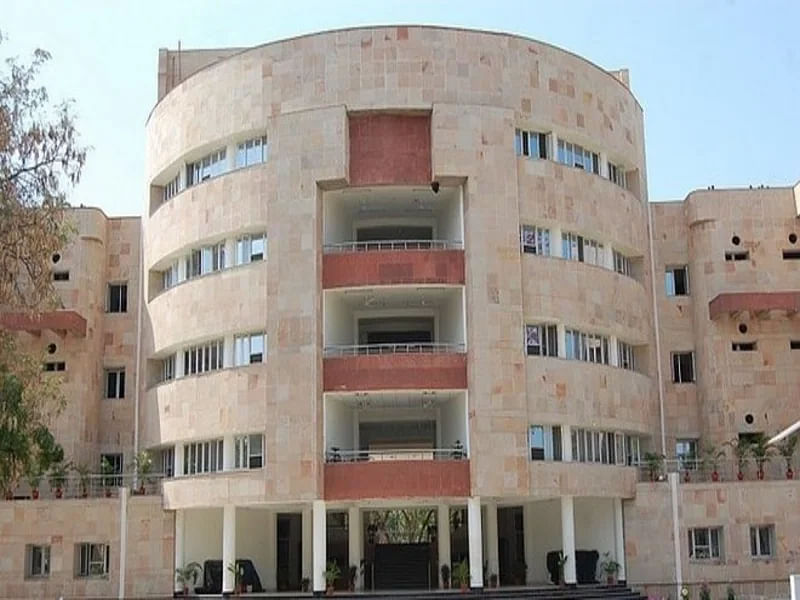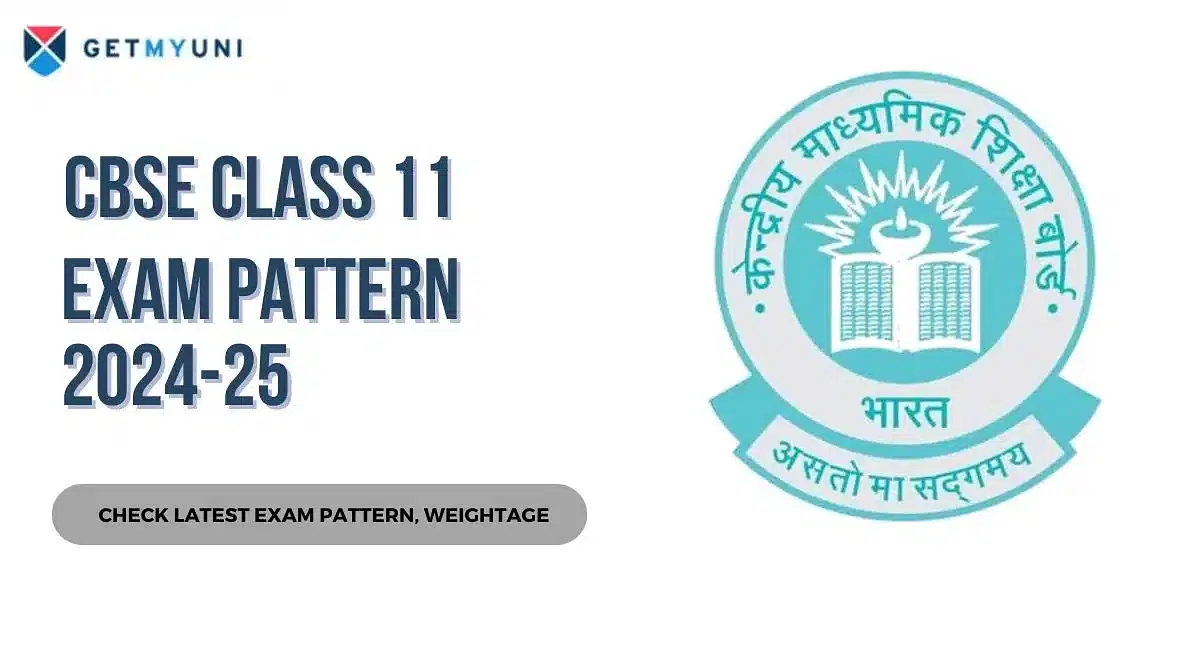CBSE class 12 computer science viva questions with answers 2024-25 include objective type/MCQ questions from various computer science programming languages. This article covers all the important questions that are asked in the CBSE 12th computer science viva.
CBSE Class 12 Computer Science Viva Questions with Answers 2024-25: Questions from programming languages like JAVA, C, C+, and C++ are generally asked in the CBS 12th viva. It helps examiners assess students' abilities in computing, technology, and programming languages.
Hence, students are advised to thoroughly understand theoretical and practice practical portions of programming languages covered in their CBSE class 12th computer science syllabus 2024-25. It will also help students with understanding the codes and programming loops for CBSE class 12 board viva exams for computer science.
This article covers all the important CBSE class 12th computer science viva questions with answers 2024-25. The CBSE Board will conduct the CBSE 12th Board exams from February 15 to April 4, 2025.
List of 40+ CBSE Class 12 Computer Science Viva Questions with Answers 2024-25
CBSE class 12 computer science viva questions with answers 2024-25 are usually asked about computational thinking and programming-2, computer networks, database management, etc. Students can go through the list of 50+ CBSE Class 12 computer science questions with answers 2024-25 mentioned below.
1. Which language translator is used by Python?
A: Interpreter language translator is used by Python.
2. What are the built-in types available in Python?
A: There are four built-in types available in the Python language namely,Numbers, Strings, Lists, Tuples, Dictionaries.
3. How does a Python interpreter interpret the code?
A: Python interpreter interprets the code line by line in a program.
4. Name a few mutable data types of Python.
A: The mutable data types are Lists, Sets, and Dictionaries in Python Language.
5. Name a few immutable data types of Python.
A: The immutable data types are Strings, Tuples, Numeric in Python Language.
6. What is the significance of a pass statement in Python?
A: Pass statement is no operation Python statement. It is used where Python requires syntax, but logic requires no actions in a program.
7. What is slicing in Python?
A: Python slicing extracts a list of elements in the range of start and stop values with step intervals from a sequence.
8. What are the comments in Python?
A: Python comments are non executable text written in the Python program to describe a statement or group of statements one after the other.
9. How to print list l in reverse order in a single-line statement?
A: In a program print list I reverse can be done like print(l[::-1])
10. Can Python string be converted into an integer or float?
A: If the string contains only numbers, it can be changed into an integer or float using int() and float() functions.
Also Read: CBSE Class 12th Computer Science Syllabus 2023-24
11. What is the difference between / and //?
A: / is used for division, // is used for floor division, / returns float as answer, // returns integer, / gives the decimal part, whereas // only gives the integer part
12. How do we check the variables stored in the same object in Python?
A: The id() function allows checking variables in the stored memory address of the Python object.
13. What are the parameters of the print() function? Explain.
A: The print function has three parameters:
- message – Contains the message to be printed
- Sep – It is an optional parameter used to print a separator.
- End – It prints the endline character
14. What is the significance of ‘else’ in loops in Python?
A: The other block is written in a Python program when the loop does not satisfy the condition of the cause. It gets executed when the while loop’s condition is false, in contrast for the for loop, it executes when the for loop ends.
15. What is the difference between the append() and extend() methods?
A: An Append () is used to add an element to the list to the last. In contrast, the Extend () is used to add multiple elements to the list.
16. Consider the statement: L = [11,22,33,[45,67]], what will be the output of L[-2+1}?
A: The output will be [45.67] for the statement L = [11,22,33,[45,67]].
Also Read: CBSE 12th Computer Science Practical Syllabus 2023-24 - Download PDF
17. What is tuple unpacking?
A: Tuple unpacking refers to extracting tuple values into a separate variable in a programming.
18. What are the two ways to insert an element into a dictionary?
A: There are two ways to insert an element into a dictionary. The ways are stated below:
- Method 1: Modifying a dictionary with fresh key and value ex. d={1:’A’,2:’B’}; d[3]=’C’
- Method 2: With a function setdefault ex. d={1:’A’,2:’B’};d.setdefault(3,’C’)
19. How to remove all elements of a list?
A: There are two ways to remove all elements of the list.
- The elements can be removed from a list using clear – l.clear().
- The elements can also be removed from a list using del – del l.
20. How is del different from clear?
The del prompt removes the entire list object where clear() just removes elements and makes the list empty.
21. What is a function?
A function is a subprogram & a smaller unit of a Python program containing a set of instructions and returns a value.
22. Does every Python program return a value?
A: No, not every Python program returns a value, some programs are valueless.
23. What are the parts of a function?
A: A Python function has the following parts:
- Function header – Function Header starts with the def keyword followed by the function name and parameters.
- Function body – Function body is a block of statements/instructions that define the action performed by the function; indentation must be followed
- Function caller statement – Function caller statement is a writing function name including parameter values
Also Check: Top 10 Mini Project Ideas For Computer Science Students
24. What are the needs of function in the Python program?
A: There are five major needs of function in a python program. The needs are given below.
- Easy program handling
- Reduce the size of the program.
- Reduce the repeated statements.
- Ambiguity can be reduced.
- Make the program more readable and understandable.
25. How to call the function through Python interactive mode?
A: Students can call the function through the Python interactive mode by the following ways:
- Save a program if not saved and click on Run > Run Module or press the F5 button from the Python script mode.
- Now, the interactive mode will appear with the message RESTART ……
- Write a function call statement with the function name and list of parameter values in the brackets.
- A function call statement is just like a function name with required parameters.
- Press enter and supply input as per requirements.
26. What are void functions? Explain with an example.
A: The void functions are those functions that do not return any value. Python functions which do not contain any return statement and have a bunch of different print statements are called void functions.Python supports a particular object, “nothing” or None data type.
27. Observe the following lines of code and identify the function definition or function caller statement:
- my fun(“TutorialAICSIP”,2020)
- myfun(name=”TutorialAICSIP”,year=2020)
- def myfun(name, year=2020)
- my fun(name=”TutorialAICSIP”, year)
A: Students can find the function identity stated below:
- my fun(“TutorialAICSIP”,2020) – function caller with positional arguments
- myfun(name=”TutorialAICSIP”,year=2020) – function caller with default arguments
- def myfun(name, year=2020) – function definition with default argument
- my fun(name=”TutorialAICSIP”, year) – function caller but receives an error
28. What are the physical line and logical line structures in the Python program?
A: The physical lines in Python programs contain EOL (End Of Line) characters at the point of termination of lines. The logical lines in Python programs contain white spaces or tabs or comments at the point of termination of lines.
29. What is indentation? Explain its importance in two lines.
A: Indentation refers to white spaces added before each line of the code. In Python, it detects the block of code.It also makes the program more readable and presentable.It reasonably organizes the code of blocks.
30. What is a top-level statement in Python?
A: The Python unindented statements in Python programs are considered a top-level statement. _main_ is also a Python top-level statement
31. What are the comments? Explain the role of comments in the Python programs.
A: Comments are non-executable parts of Python programs.Students can write a comment for the description or information related to statements, basic details of programs, etc.
There are two types of comments:
- Single-Line: These comments are written to explain single-line comments, beginning with #
- Multi-Line: These comments are written for explaining multi-line comments, begin and end with ”’ triple quotes
32. Do Python program functions contain multiple return statements and return multiple values?
A: Yes, python program functions can have multiple return statements. To return multiple values, students can write values with the return keyword separated by a comma.
Also Read: CBSE Class 12 Computer Science Deleted Syllabus 2023-24
33. What do fruitful and non-fruitful functions mean in Python?
A: The functions that return values are called fruitful functions. The functions not returning values are called non-fruitful functions.
34. Which three types of functions are supported by Python?
A: Python supports the following three types of functions:
- Built-in Functions
- Functions defined in modules
- User-defined functions
35. What are the parameters and arguments in Python programs?
A: Python program has the following parameters and arguments:
- Parameters are the values provided at the time of function definition. For Ex. p,r, and n.
- Arguments are the values passed while calling a function for Ex. princ_amt, r, n in main().
36. Which types of arguments are supported by Python?
A: Python supports four argument types:
- Positional Arguments: Arguments passed to a function in correct positional order, no. of arguments must match with no. of parameters required.
- Default Arguments: Assign default value to a specific parameter; it is used when the user knows the value of the parameter; default values are specified in the function header. It is optional in the function call statement. If not provided in the function call statement, then the default value is considered.
- Word Arguments: Keyword arguments are the named arguments with assigned values being passed in the function call statement; the user can combine any type of argument.
- Variable Length Arguments: It allows the user to pass as many arguments as required in the program. Variable-length arguments are defined with the * symbol.
37. What are the rules one should follow while combining different types of arguments?
A: An argument list must contain positional arguments followed by any keyword argument. Keyword arguments should be taken from the required arguments, preferably. The value of the argument can’t be specified more than once.
38. What does Python variable scope mean?
A: The Python variable scope refers to the access location of the variable defined in the program. A Python program structure has different locations to declare and access the variable. There are two scopes of variables in Python namely Local Scope and Global Scope
39. What is the local and global scope variable?
A: The variable that is declared inside a function and can be accessible inside a function is known as the local variable scope. The variable declared in top-level statements of the Python program is called a global variable scope. It is accessible anywhere in the program.
Also Check: CBSE Class 12 Syllabus 2023-24
40. What is the complete form of LEGB? Explain in detail.
A: LEGB stands for Local-Enclosing-Global-Built-in. Python checks the order of variables in a program by the LEGB rule. First, it checks for the local variable; if the variable is not found locally, then it looks in enclosing, then global, and then the built-in environment.
41. What are mutable and immutable arguments/parameters in a function call?
A: Mutable arguments/parameter values changed over the access of value and variable at runtime. Immutable arguments/parameters whose values cannot be changed. They allocate new memory whenever the value is changed.
42. What are modules in Python?
A: An extensive program is divided into modules. A module is a set of small coding instructions written in a programming language. These modules create a library. A Python module is a .py that contains statements, classes, objects, functions, and variables.
That allows reusing them anytime by importing the module. The structure of the Python module plays a vital role in Python library functions.
43. Name a few commonly used libraries in Python.
A: The most commonly used libraries in Python are as follows:
- Standard library
- Numpy Library
- Matplotlib
- SciPy
44. What does docstrings mean in Python?
A: Docstrings in Python programming are the triple quoted text of the Python program. It provides comments related to the authors of the program and details about functions, modules, and classes. The docstrings contents written in the module can be accessed through the help().
45. Is there any difference between docstrings and comments?
A: The docstrings and comments were ignored by the Python interpreter in execution. But the docstring provides the information about modules, functions or classes which can be accessed by the help() function.
46. What is the use of the dir() function?
A: The dir() function is used to display defined symbols in the module.
CBSE Class 12 Computer Science Practical Viva Questions Marking Scheme
There are certain parameters based on which students' performance is evaluated in the exam. Students can go through the evaluation scheme stated below.
| Particulars | Marks |
|---|---|
| Report File | 7 |
| Viva Voice Report Based | 2 |
| Project | 8 |
| Viva Voice-based Project-Based | 3 |
| Total | 30 |
Also Check: Computer Science Courses After 12th







![Motilal Nehru National Institute of Technology, [MNNIT] Allahabad](https://media.getmyuni.com/azure/college-image/small/motilal-nehru-national-institute-of-technology-mnnit-allahabad.webp)

















